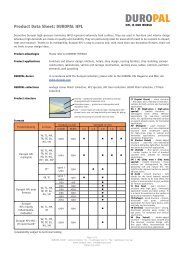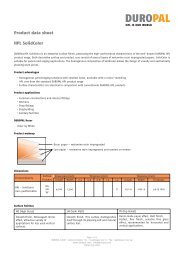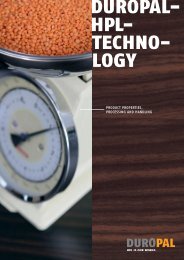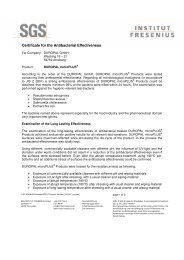You also want an ePaper? Increase the reach of your titles
YUMPU automatically turns print PDFs into web optimized ePapers that Google loves.
HOW DOES SUSTAINABILITY DETERMINE CONSUMER BEHAVIOUR?<br />
For some people, health and closeness to nature is the overriding precept.<br />
others are greatly interested in efficient, new technologies, which for example<br />
safe energy. Still others rely on regional products and producers, or<br />
want durable, quality products. But they all have one thing in common.<br />
they consider not only the conventional product properties such as material<br />
quality, durability, usage and working possibilities, but also decide<br />
according to criteria of sustainability.<br />
WHO OR WHAT ARE LOHAS ?<br />
SUStaiNaBiLitY<br />
Sustainability meets lifestyle trends. Whoever wants to know what LoHaS looks<br />
like should ideally visit a bio-supermarket and take a look at the very mixed<br />
clientele. LoHaS (abbr. for Lifestyle of Health and Sustainability), stands for a<br />
new and deliberate type of consumer behaviour. responsibility and personal<br />
enjoyment is not a contradiction in terms for these customers. due to their<br />
purchasing power and their increasing numbers, LoHaS consumers are now<br />
considered to be an important economic factor — not only for bio-supermarkets.<br />
CAN WE REALLY PROTECT <strong>THE</strong> CLIMATE?<br />
Without wanting to play down environmental pollution, there is justified<br />
criticism of the role allocation between what is to be protected (the climate)<br />
and the protector (man). does the supposed protector actually have the<br />
power to be able to ‘control’ the climate? in view of the complexity and the<br />
inherent dynamics of the climate, this may well be subject to fundamental<br />
doubt. Just as problematical is that ‘climate protection’ in too general a form,<br />
as an incontestable argument, stifles necessary factual discussion and the<br />
critical questioning of individual measures.<br />
ARE NATURAL MATERIALS AUTOMATICALLY MORE ECOLOGICAL, AND WHAT<br />
DO EXPERTS ACTUALLY MEAN BY <strong>THE</strong> TERM CRADLE-TO-CRADLE?<br />
However surprising it may seem, natural materials are not necessarily better by<br />
nature. Long transport routes and no more than average preservability may in some<br />
cases mean that natural materials put more stress on the environment than synthetically<br />
produced materials with greater durability. in order to be able to assess<br />
the ecological sustainability of a product, all factors must be taken into account:<br />
such as, for example, the strategy of cradle-to-cradle materials. “[this] considers<br />
the positive environmental balance of the materials throughout the complete<br />
product life cycle, i.e. also with respect to how the products can be reintegrated into<br />
the natural or technical cycle after use,” in the words of anne Farken of Material<br />
ConneXion ® Cologne. Further information on the environmental balance of HPL and<br />
an interview with anne Farken can be found on the following pages.<br />
HPL World _ 63










